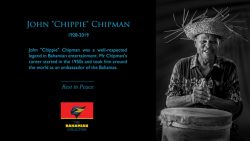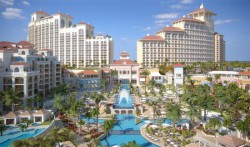Food Security is a matter of concern to small and large states, independent or colonies. The Turks and Caicos Islands, though still a British colony, yet maintaining close relationships with The Bahamas, have put in motion an initiative to revive its Agricultural Sector.
ᅠ The Turks and Caicos Islands are at the southern extremity of the Bahamian archipelago. Climatically and topographically, these islands have much in common with the Bahamian southeastern islands of Mayaguana, Acklins, Crooked Island and Inagua. Ethnically, it is said that there are more Turks and Caicos Islanders in The Bahamas than in the Turks and Caicos.
There is also the view that there should be the free movement of people and capital between Turks and Caicos and The Bahamas as both territories have much in common.
Now that the Turks and Caicos Islands’ government has recognized that it has to have some type and level of domestic food production, this should facilitate greater cooperation between the two states on agricultural work, perhaps a jointly funded southeastern islands research station could be started in order to make research work in crop varieties, livestock, pasture establishment, land preparation as well as crop and livestock surveillance programmes to ensure that harmful pests and diseases do not enter either territories.
Further, there could also be avenues to cooperate in the purchasing of inputs i.e. seeds, fertilizers and chemicals as well the marketing of produce. There will be much scope for cooperation between our neighbouring archipelagic states.
The Caribbean Agricultural Research and Development Institute (CARDI), recently investigated the conditions for crop production on the Turks and Caicos Islands. The following is a brief report:
Soil Assessment, Turks and Caicos Islands
The Caribbean Agricultural Research and Development Institute (CARDI) at the request of the Government of Turks and Caicos Islands has completed a preliminary soil capability assessment of the Turks and Caicos Islands to determine their capability for sustained agricultural production of selected crops.
Farming was practiced in the past extensively in Turks and Caicos Islands; but their agriculture declined considerable especially after hurricane Donna blew over the islands in 1960.
CARDI’s Soil Scientist, Dr. Leslie Simpson, conducted the soil capability assessment to determine the potential of the soils for prolonged agricultural production.
He explained that one aspect of the assessment involved “classifying the soil types, assessing the topography of the islands and examining its climate especially the rainfall.”
He added that besides the capability of soil’s ability to sustain crop growth, “sustainable agriculture production depends on other important physical features in the environment.”
They include climatic conditions, particularly rainfall, topography of the land, the availability of water resources and natural vegetation.
Based on the analysis of the findings regarding the assessment several recommendations have been made by CARDI towards improving the agricultural industry of the country.
They include an educational programme that promotes the production and consumption of locally grown foods, financial support for the farming sector and the development of specific business plans by each farmer.
CARDI is in a unique position to provide much of the assistance that is needed to implement these plans since the Institute has already provided these services for the agricultural sectors of the entire English speaking Caribbean through its Demonstration and Training Centres (DTCs). Furthermore, CARDI’s Agribusiness and Marketing Units are uniquely positioned to assist in the development of business plans, the assessment of local agriculture and food crops and the operation of farms as successful and profitable business ventures.
The Turks and Caicos Islands consist of eight large islands as well as forty smaller islets and cayes. They are situated 920-km southeast of Miami and about 50-km southeast of the Bahamian island of Mayaguana. The islands are separated into two main groups separated by the Turks Island Passage; the Caicos Islands include six of the large islands while the Turks Islands include the remaining two large islands. The islands have a total land area of 430 km.
By: Godfery Eneas , The Bahama Journal



